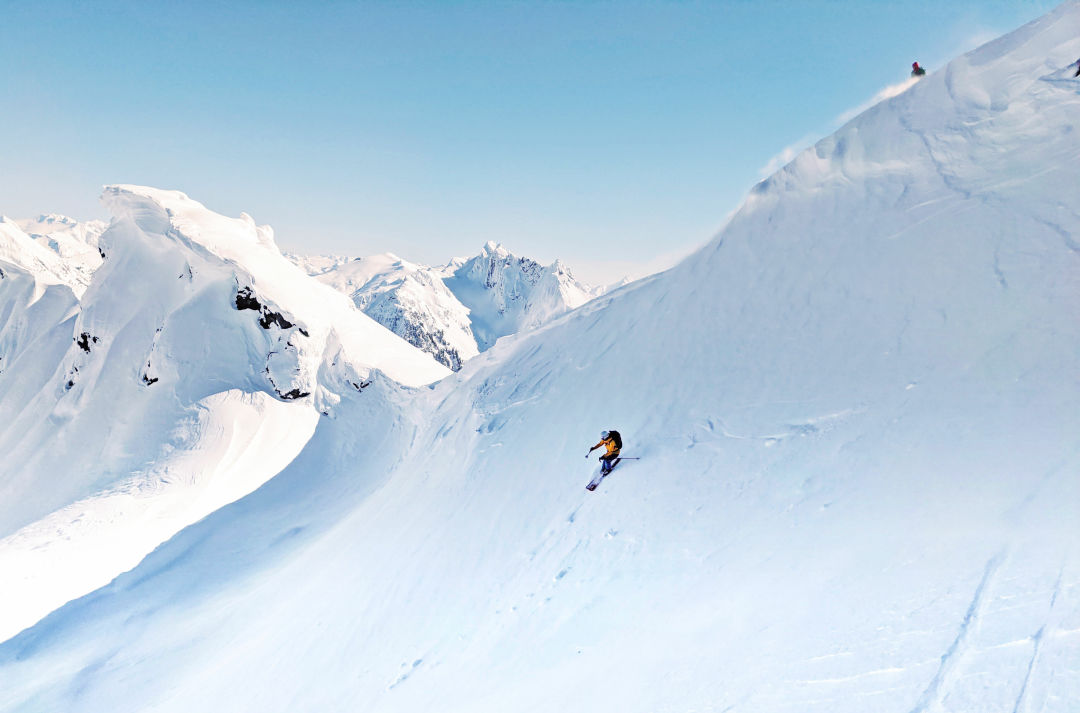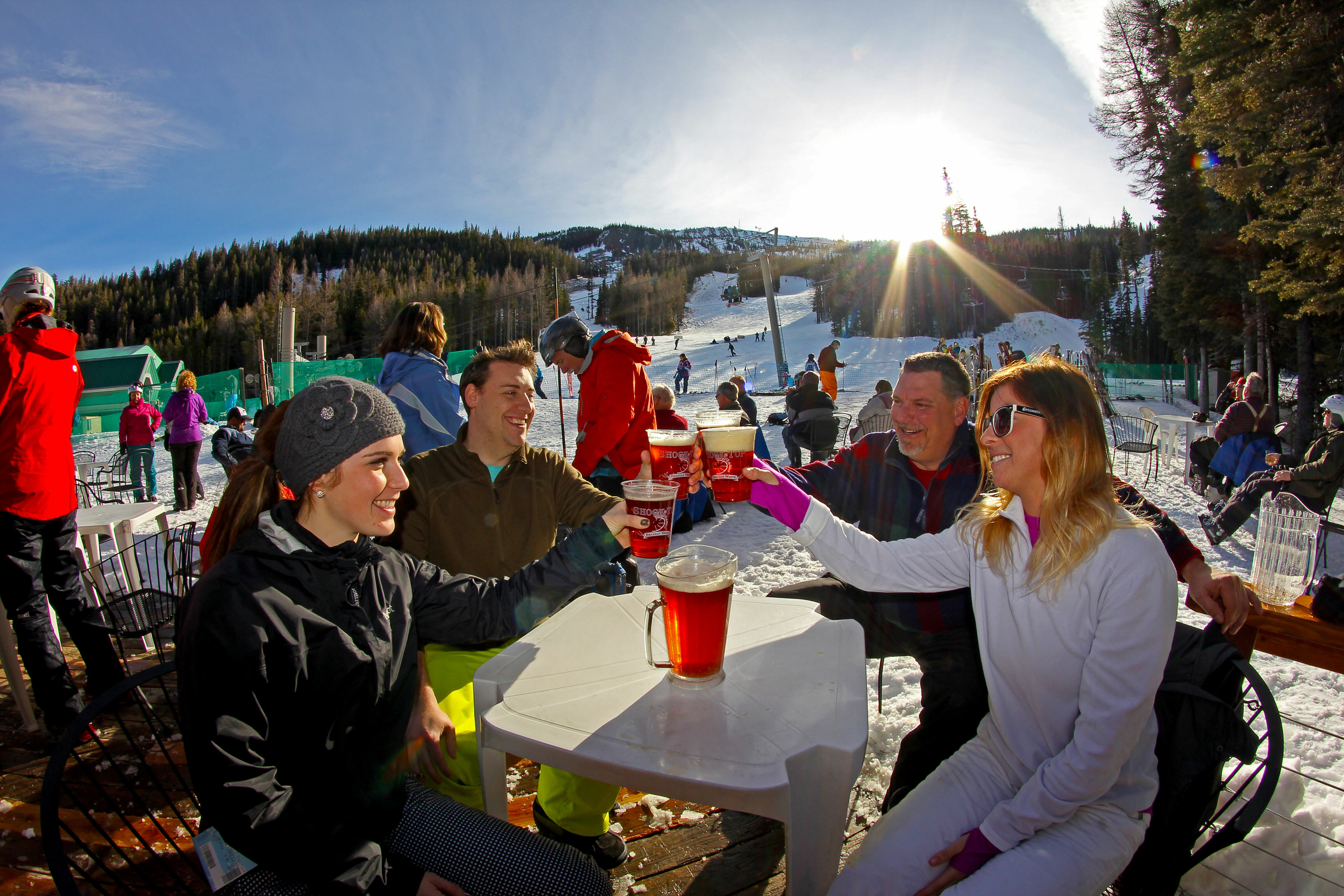Skiing Is Stupid. Do It Anyway.

The author skiing in the backcountry near Mount Baker in 2020, still in yellow.
Image: Grant Roush
Frozen snot. Interminable lift lines. Two-hour drives just to fight for a parking spot on half-frozen gravel. What’s wrong with skiing? Well, how much time have you got? The longer you linger on the subject, the more cruddy aspects burble to the surface. Lift tickets that get more expensive every year, the gear that costs twice as much, 5am alarms.
Skiing’s the easy part. The rest is hard.
There’s the terror of waiting for my turn to blow out an ACL—c’mon, knee, you’ve held on this long—and the guilt over the environmental cost. All that ski wax in mountain waterways, the diesel engines powering ski lifts, the clear-cuts to construct a good blue groomer. There’s the fear climate change could erase the whole endeavor, our snowpack dwindling year by year.
Hell, as always, must include other people: jerks who cut in lift lines, reckless drivers on mountain roads, the pricks who poach the powder, and the smug superiority of anyone who’s been at the mountain longer than you.
Twelve dollar hot dogs.
And yet skiing remains one of the most popular ways to spend a winter in Washington. Making a controlled fall down snow, a surface so deadly we arm our car tires with chains to survive it. If golf has famously been labeled a good walk spoiled, skiing can only be considered a wintry Robert Frost poem turned sadistic.
I was lucky enough to start the sport as a kid, when my center of gravity was low and my parents footed the bill. Clad in blinding yellow bibs, I flew down the slopes of Crystal Mountain and White Pass. Turning slowed you down, so I didn’t, arms outstretched like a starfish.
On the ski bus from Olympia High School every Saturday, the stink of sweaty ski boots lingered in the air while preteen boys in the back seats combined every flavor of soda and dared each other to drink it. I can still hear my friend’s dad coaching me through my first black diamond run, yelling “Don’t snowplow!” as I fearfully rounded moguls. A few years later, I followed an older teen into Crystal’s then-remote Northback for my first hike-in run.
To a never-brave kid, it was the one arena that demanded, then rewarded, nascent nuggets of boldness. Today, four pairs of skis lean in the corner of my living room. I text about the sport so much that my iPhone autocorrects my nickname, “Ali,” to the word “ski.” And I can offer only full-throated support to anyone thinking of starting the sport.

The author skiing in the 1980s, clad in yellow bibs purchased at Olympia's much-missed Yard Birds.
Image: Courtesy Allison Williams
Taking up skiing or snowboarding means giving yourself a reason to love Washington’s darkest months. Learning as a kid might be easier, but embracing the activity as an adult feels like an immediate throwback to childhood: Roll in the snow. Try something ridiculous. Be really bad at something until you get better.
On a visceral level, skiing is an unadulterated thrill. As roller coasters and motorcycles have taught us, moving fast means big adrenaline. Fluffy powder may be rare among the Northwest’s dumps of Cascade Concrete snow, especially compared to Utah and Colorado’s high-and-dry resorts, but when found it delivers a swooping, weightless descent—a drug-like high.
It may not be Crossfit, but sore muscles don’t lie. Balance, strength, coordination—a little of each is useful, though the whole endeavor still delights when you’re out of shape. Skiing proved to be a back door into my identity as an athlete, distinct from team sports and gym punishment.
But the appeal hits on a more cerebral plane, too: its tie to Washington’s past. Seeing historic photos of women in wool sweaters and baggy pants on the slopes of Rainier reminds me that Northwest locals have always been a little brave and a little bored in winter, more interested in a frigid mountainside than cozy comfort. The log and stone lodges erected for winter recreation, by ski clubs or FDR’s New Deal crews, represent the state’s best architectural tradition.
In small pockets of the mountains, I see the sport pushing to become more sustainable, more thoughtful. I see it spread beyond its roots with organizations that promote adaptive athletes, BIPOC instructors, and Indigenous skiers. Amid the Seattle Freeze (see page 24), ski buddies can become the most constant of friends, and form the most optimistic group chat ever, constantly daydreaming about next season.
But the deepest draw of snow sports lies in how they get you in the heart. It puts you in a special place, as much geographically as metaphorically: in chilled air that would hurt to breathe if it got any colder, under an incongruous glow of midwinter sun below Washington’s dramatic, impossibly steep peaks covered with snow.

The author in the backcountry near Nelson, British Columbia.
Image: Sarah Miles
In Washington’s backcountry I trace the contours of the Northwest wilderness in ways that would be impossible without snow. To ski a mountain is to get to know its ever-shifting face, its surprises; gravity doesn’t always take you the way you think, and nature doesn’t always act the way you hope. Gullies and chutes cradle you—or force you where you didn’t want to go. Snow pulses with its own life, its energy capable of great avalanching destruction.
One’s mind must be on the task at hand, but in being there it also becomes still, achieving an elegant emptiness. Skiing is meditation for some, basically a religion for others. Me, I chase a route through my descent, one that couldn’t be replicated if anyone tried. That satisfaction marries the challenge to accept that even the most perfectly traced ski line eventually disappears from wind, new snow, or spring’s melt.
As ski season approaches, all the reasons not to do it will pile up again. But on the first run, and the 400th, every dollar spent and painful wake-up will meet the sheer force of its appeal. In finding my place on a mountainside, quite literally, I move toward the self I want to be.




